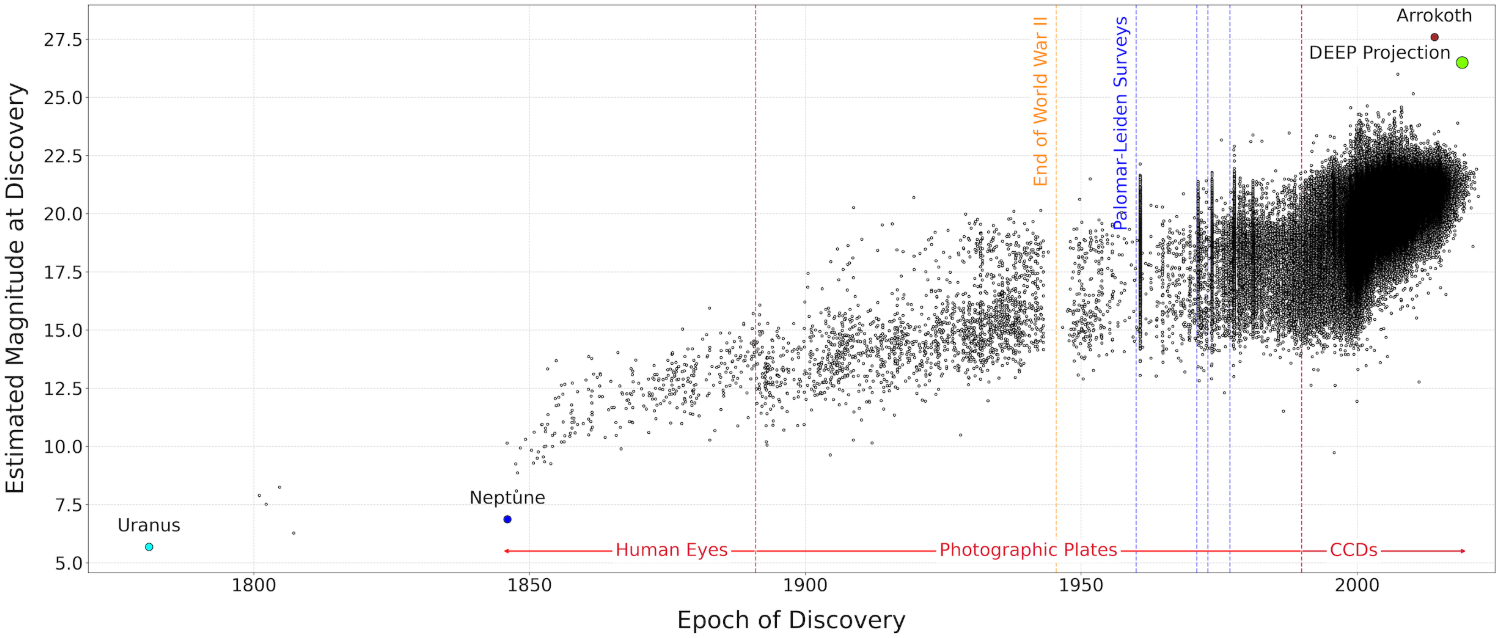SB11
The Rubin Observatory Census of the Solar System: Initial Commissioning Results and First Year Science Expectations for the Legacy Survey of Space and Time
Co-organized by MITM
Conveners:
Megan E. Schwamb,
Mario Jurić
|
Co-conveners:
Colin Chandler,
Laura Inno,
Pedro H. Bernardinelli,
Sarah Greenstreet,
Henry Hsieh
Orals WED-OB3
|
Wed, 10 Sep, 11:00–12:30 (EEST) Room Saturn (Hall B)
Orals WED-OB5
|
Wed, 10 Sep, 15:00–16:00 (EEST) Room Saturn (Hall B)
Posters TUE-POS
|
Attendance Tue, 09 Sep, 18:00–19:30 (EEST) | Display Tue, 09 Sep, 08:30–19:30 Finlandia Hall foyer, F197–206
The session will present the first Solar System discoveries and characterization data from Rubin commissioning efforts, and preliminary analyses made with those observations. We will also introduce the services and resources for public data access, including documentation and tutorials. We welcome submissions focused on topics related to early LSST Solar System science such as: predictions of discovery yields, presentations on Solar System-oriented alert brokers and other science-enabling tools, follow-up observations and campaigns, citizen science projects, and ways to combine LSST data with other sources of astronomical data. With the full LSST data stream arriving just a few months following this session, we hope to excite and prepare the community for science with this one-of-a-kind dataset.
Session assets
11:00–11:12
|
EPSC-DPS2025-242
|
On-site presentation
11:12–11:18
Discussion
11:18–11:30
|
EPSC-DPS2025-1075
|
On-site presentation
11:30–11:42
|
EPSC-DPS2025-418
|
ECP
|
On-site presentation
11:42–11:54
|
EPSC-DPS2025-719
|
ECP
|
On-site presentation
11:54–12:06
|
EPSC-DPS2025-1189
|
ECP
|
On-site presentation
12:06–12:18
|
EPSC-DPS2025-96
|
On-site presentation
12:18–12:30
|
EPSC-DPS2025-25
|
On-site presentation
15:00–15:12
|
EPSC-DPS2025-1092
|
ECP
|
On-site presentation
15:12–15:24
|
EPSC-DPS2025-989
|
On-site presentation
15:24–15:36
|
EPSC-DPS2025-1510
|
On-site presentation
15:36–15:48
|
EPSC-DPS2025-736
|
On-site presentation
15:48–16:00
|
EPSC-DPS2025-444
|
On-site presentation
F197
|
EPSC-DPS2025-856
|
On-site presentation
F198
|
EPSC-DPS2025-1056
|
ECP
|
On-site presentation
F199
|
EPSC-DPS2025-1181
|
ECP
|
On-site presentation
F201
|
EPSC-DPS2025-1036
|
ECP
|
On-site presentation
F202
|
EPSC-DPS2025-1788
|
ECP
|
On-site presentation
F203
|
EPSC-DPS2025-1123
|
On-site presentation
Early LSST Results: The view from the Minor Planet Center
(withdrawn after no-show)
F205
|
EPSC-DPS2025-385
|
On-site presentation
